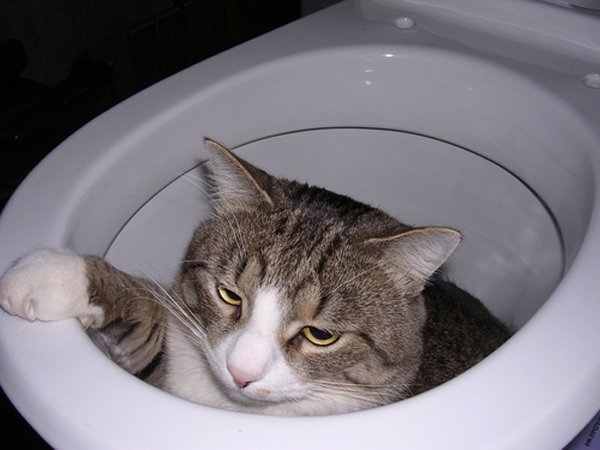This article following next involving Can You Flush Cat Poop Down The Toilet? is fairly enlightening. You should give it a look.

Intro
As feline proprietors, it's vital to bear in mind exactly how we throw away our feline pals' waste. While it may appear practical to purge feline poop down the commode, this practice can have detrimental effects for both the environment and human health and wellness.
Environmental Impact
Flushing feline poop introduces harmful microorganisms and bloodsuckers into the water, posing a considerable risk to aquatic communities. These contaminants can negatively affect marine life and compromise water high quality.
Wellness Risks
Along with ecological worries, flushing pet cat waste can also posture health dangers to people. Pet cat feces may have Toxoplasma gondii, a bloodsucker that can cause toxoplasmosis-- a possibly extreme illness, especially for expectant females and individuals with weakened immune systems.
Alternatives to Flushing
Luckily, there are more secure and extra liable ways to deal with feline poop. Consider the complying with options:
1. Scoop and Dispose in Trash
The most common approach of getting rid of pet cat poop is to scoop it right into a naturally degradable bag and throw it in the trash. Make sure to make use of a specialized litter scoop and deal with the waste quickly.
2. Use Biodegradable Litter
Select biodegradable pet cat trash made from products such as corn or wheat. These litters are eco-friendly and can be securely gotten rid of in the trash.
3. Hide in the Yard
If you have a lawn, think about burying pet cat waste in an assigned location away from veggie gardens and water resources. Make certain to dig deep adequate to stop contamination of groundwater.
4. Mount a Pet Waste Disposal System
Purchase an animal garbage disposal system particularly made for cat waste. These systems use enzymes to break down the waste, lowering smell and ecological influence.
Verdict
Responsible pet dog ownership expands beyond providing food and sanctuary-- it also includes correct waste administration. By avoiding flushing feline poop down the commode and choosing alternate disposal approaches, we can reduce our ecological impact and protect human health.
Why Can’t I Flush Cat Poop?
It Spreads a Parasite
Cats are frequently infected with a parasite called toxoplasma gondii. The parasite causes an infection called toxoplasmosis. It is usually harmless to cats. The parasite only uses cat poop as a host for its eggs. Otherwise, the cat’s immune system usually keeps the infection at low enough levels to maintain its own health. But it does not stop the develop of eggs. These eggs are tiny and surprisingly tough. They may survive for a year before they begin to grow. But that’s the problem.
Our wastewater system is not designed to deal with toxoplasmosis eggs. Instead, most eggs will flush from your toilet into sewers and wastewater management plants. After the sewage is treated for many other harmful things in it, it is typically released into local rivers, lakes, or oceans. Here, the toxoplasmosis eggs can find new hosts, including starfish, crabs, otters, and many other wildlife. For many, this is a significant risk to their health. Toxoplasmosis can also end up infecting water sources that are important for agriculture, which means our deer, pigs, and sheep can get infected too.
Is There Risk to Humans?
There can be a risk to human life from flushing cat poop down the toilet. If you do so, the parasites from your cat’s poop can end up in shellfish, game animals, or livestock. If this meat is then served raw or undercooked, the people who eat it can get sick.
In fact, according to the CDC, 40 million people in the United States are infected with toxoplasma gondii. They get it from exposure to infected seafood, or from some kind of cat poop contamination, like drinking from a stream that is contaminated or touching anything that has come into contact with cat poop. That includes just cleaning a cat litter box.
Most people who get infected with these parasites will not develop any symptoms. However, for pregnant women or for those with compromised immune systems, the parasite can cause severe health problems.
How to Handle Cat Poop
The best way to handle cat poop is actually to clean the box more often. The eggs that the parasite sheds will not become active until one to five days after the cat poops. That means that if you clean daily, you’re much less likely to come into direct contact with infectious eggs.
That said, always dispose of cat poop in the garbage and not down the toilet. Wash your hands before and after you clean the litter box, and bring the bag of poop right outside to your garbage bins.
https://trenchlesssolutionsusa.com/why-cant-i-flush-cat-poop/

We are very fascinated by How to Dispose of Cat Poop and Litter Without Plastic Bags and I'm hoping you enjoyed my blog posting. I beg you take the time to distribute this write-up if you enjoyed it. Many thanks for taking the time to read it.
Call Today